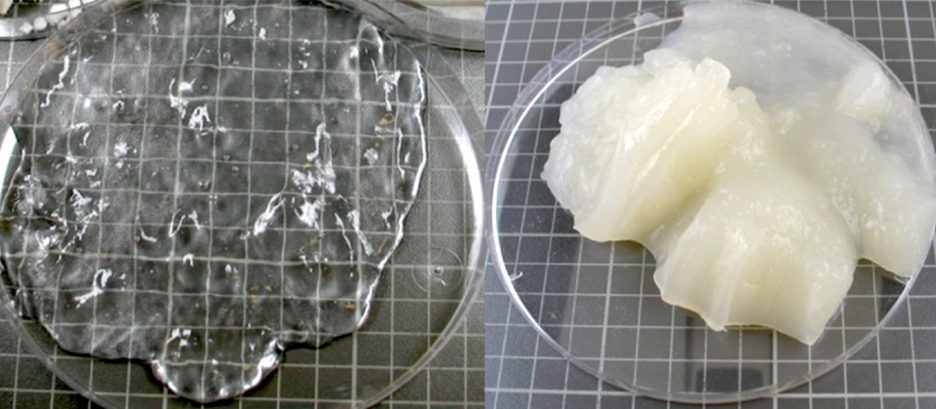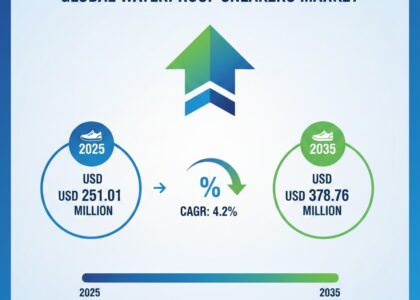
Derived from natural wood pulp, cellulose gel has long played a behind-the-scenes role in food, pharmaceuticals, and personal care. It thickens, stabilizes, emulsifies, and replicates creamy textures—all without adding calories, taste, or artificial chemicals. But as demand for natural, plant-based, and sustainable ingredients grows globally, this once-overlooked additive is turning into a strategic essential.
According to Future Market Insights, the global cellulose gel market is projected to grow from USD 34 million in 2025 to USD 60.9 million by 2035, expanding at a steady CAGR of 6% over the forecast period. That kind of trajectory isn’t just market noise—it’s a clear signal that cellulose gel is becoming indispensable in modern product formulation.
Unlock Key Market Trends: Get Your Sample Report: https://www.futuremarketinsights.com/reports/sample/rep-gb-11680
A Problem of Clean Labels—and Clean Performance
The food and personal care industries are stuck between two conflicting forces: the need to remove artificial additives, and the expectation that products still look, feel, and taste the same. That’s where cellulose gel comes in.
Whether it’s keeping a salad dressing stable without emulsifiers or giving low-fat yogurt a rich mouthfeel, cellulose gel helps manufacturers clean up ingredient lists while preserving product integrity. It’s plant-based, non-toxic, and multifunctional—making it an ideal solution for today’s ingredient-conscious marketplace.
Increased Market Demand: Get In-Depth Analysis and Insights with Our Complete Report: https://www.futuremarketinsights.com/reports/cellulose-gel-market
Global Growth, Local Stakes
While North America and Europe continue to represent major markets for cellulose gel, rapid industrial expansion and rising consumer packaged goods demand in Asia-Pacific are fueling significant volume growth. At the same time, manufacturers worldwide are being forced to revisit formulations to comply with shifting regulatory landscapes and growing demand for sustainability.
Cellulose gel fits squarely into that transition. It’s produced from renewable raw materials and is biodegradable—qualities that not only align with environmental goals but also help future-proof formulations as global compliance standards tighten.
More Than Just a Thickener
Although best known for its use in food and beverages, cellulose gel’s reach extends far beyond the grocery aisle. In the pharmaceutical sector, it enables precise viscosity control in oral medications and creams. In cosmetics, it provides texture and stability to lotions and serums—particularly as the industry pivots toward natural, synthetic-free alternatives.
Its versatility is precisely what makes its growth so notable. From clean-label ketchup to gentle moisturizers and plant-based capsules, cellulose gel’s rise is being driven not by fads, but by fundamental shifts in how products are made and marketed.
The Future Is Functional
The cellulose gel market’s projected leap from USD 34 million in 2025 to USD 60.9 million by 2035, as reported by Future Market Insights, isn’t just about numbers. It’s a reflection of a deeper industry transformation—one where natural functionality is no longer a bonus, but a requirement.
As brands compete to meet the new standard of “natural, effective, and clean,” cellulose gel is moving from the fine print to the center of innovation. And in a world increasingly shaped by what’s on the label, this understated additive may just become one of the most important ingredients of the decade.
Company Profile
-
- DowDuPont
- DFE Pharma GmbH & Co.KG
- JRS Pharma GmbH & Co.KG
- Asahi Kasei Chemicals Corporation
- Roquette
- Avantor Performance Materials Inc
- Rayonier Advanced Materials
- Accent Microcell Pvt. Ltd.
- Sigachi Industrial Pvt. Ltd.
 Explore Functional Food Ingredients Industry Analysis: https://www.futuremarketinsights.com/industry-analysis/functional-food-ingredients
Explore Functional Food Ingredients Industry Analysis: https://www.futuremarketinsights.com/industry-analysis/functional-food-ingredients
Key Segmentation
By Source:
- Wood Cellulose
- Cottonseeds Cellulose
By Application:
- Food & Beverages
- Pharmaceutical
- Cosmetics & Personal Care
- Others
By Region:
- North America
- Latin America
- Europe
- East Asia
- South Asia
- Oceania
- Middle East & Africa





